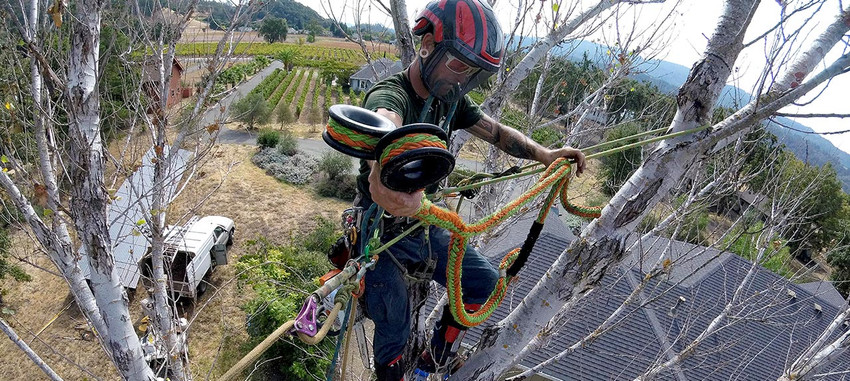TFTC#23 Phil Kelley on Rigging
Sherrilltree Mar 24th 2021This year for the 2021 Master catalog, we got the chance to interview several leaders in the arborist community about their knowledge on different subject matters. We spoke with Phil Kelley, Wright Tree Safety Team Lead, about his general approach on rigging.
This year for the 2021 Master catalog, we got the chance to interview several leaders in the arborist community about their knowledge on different subject matters. We spoke with Phil Kelley, Wright Tree Safety Team Lead, about his general approach on rigging and rigging equipment.
- What rigging equipment do you feel has been a game changer in the field?
- Depending on the region, Portawraps have been revolutionary. Also, I’m trying to walk teams away from big, chunky rigging and get them into the smaller, green ISC block, or the small orange CMI block. I've introduced the use of rings for aerial friction- that’s been big for them.
- What’s the advantage of the aerial friction devices for your teams?
- Basically ease of use, and adding friction at the top eases the training process at the bottom. It creates an environment where one person on the ground can do what normally takes two. It’s less equipment involved, less structure, and less learning curve while providing a little bit higher safety factor in the tree.
“The biggest challenge we have now is deciding on what to use where with all the options available today. Put the tool to the task.”
- You said you’re getting your teams away from big, chunky blocks and moving toward the smaller, more streamlined products. Tell us more about that.
- When you look in a line clearance rigging bag, it's going to have the biggest portawrap that’s been invented with a ¾", 35' whoopie sling, and up in the tree there’ll be a ¾", 12' long sling that’ll have the huge, massive block, running a ¾" rope because they think bigger is better. You know, a lot of those guys look down on the ground and see that big block with that massively long sling that’s such a huge pain in the butt to move, then they’re like, just leave it; just throw the rope over a tree branch. I don’t blame them, I’d be thinking that, too! If all they have is a 12' limb over a primary, forget all that gear, they’ll just do it the hard way. Wouldn’t you?! OR, you give me two DMM Pintos and a chain reactor, and I’m done, right? With a Pinto and an x-ring, I can change the world. The biggest challenge we have now is deciding on what to use where with all the options available today. Put the tool to the task. It’s like SRS—is it a good system to complete the task? It depends on the task I’m asking you to perform. There are plenty of trees where I think MRS is a beautiful system, and I think SRS is beautiful depending on the tree. Tool for Task.
- So when you’re building a rigging system, what principles guide how you set it up?
- Two super simple things: one, is the tree in compression? Two, am I using more than one directional anchor to succeed in keeping it in compression?
If the tree isn’t in compression, it’s under either a bending moment or a lever force. I’ll create torsional loading and the tree will fail. Trees don’t fail in compression, so my rigging positions should always be in compression. I should always be trying to smash the tree into the ground with the rigging force.
More on the second: do I have more than one directional anchor? One directional anchor multiplies negative energy in the crown of the tree, but two anchors, when done well, splits the system therefore reducing energy and adding compression.
- Thanks, Phil, for taking the time to talk to us!

